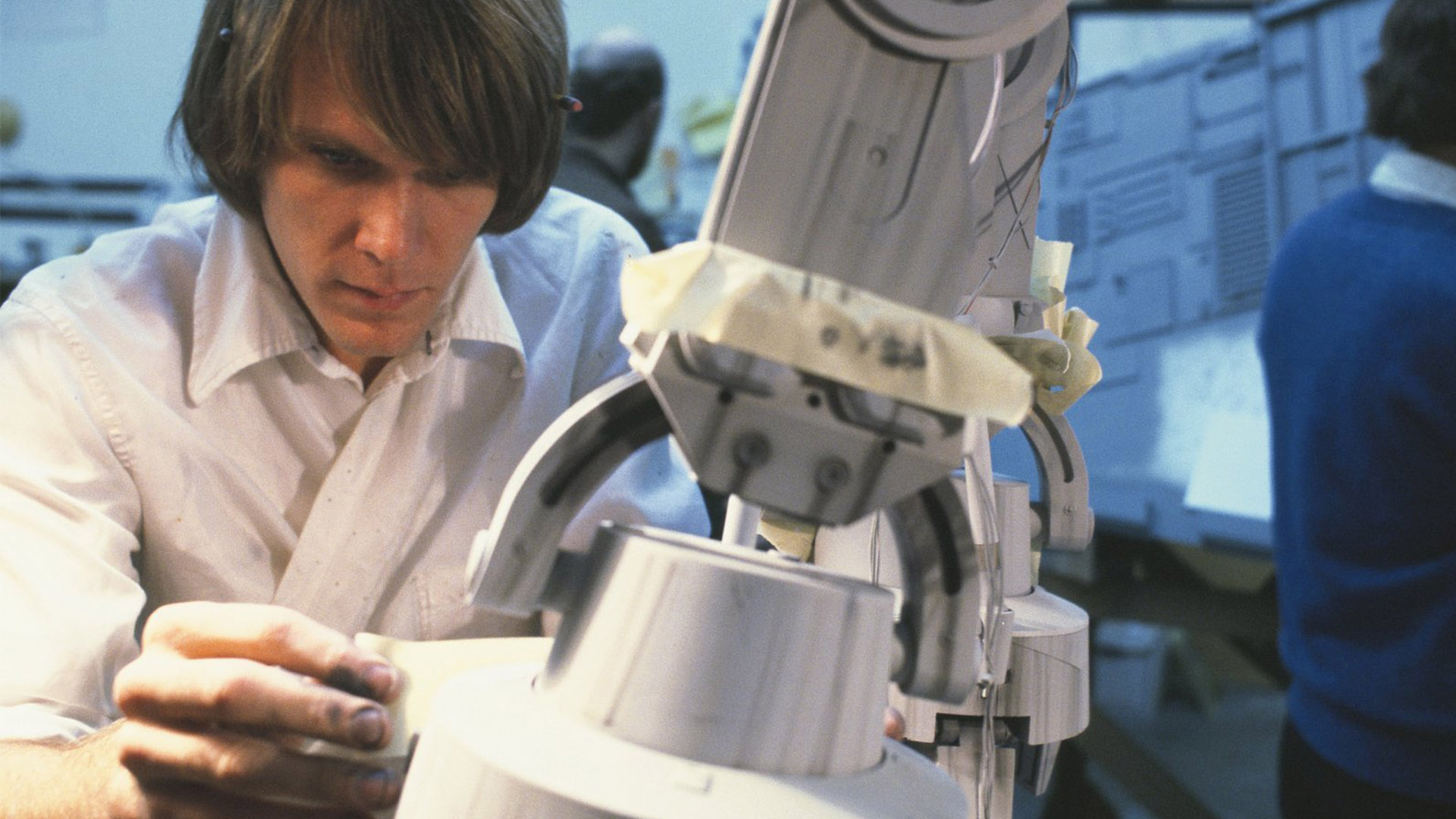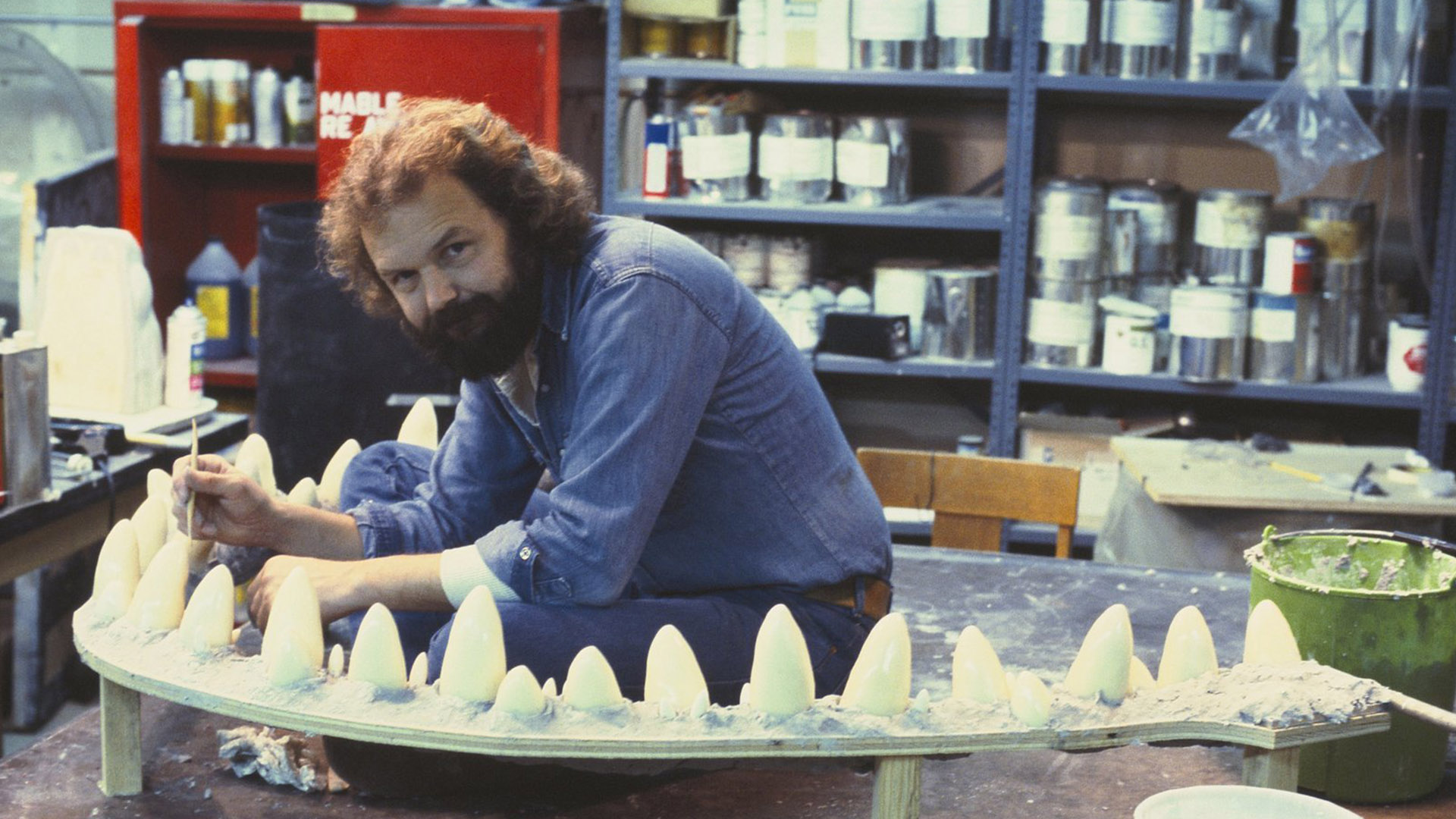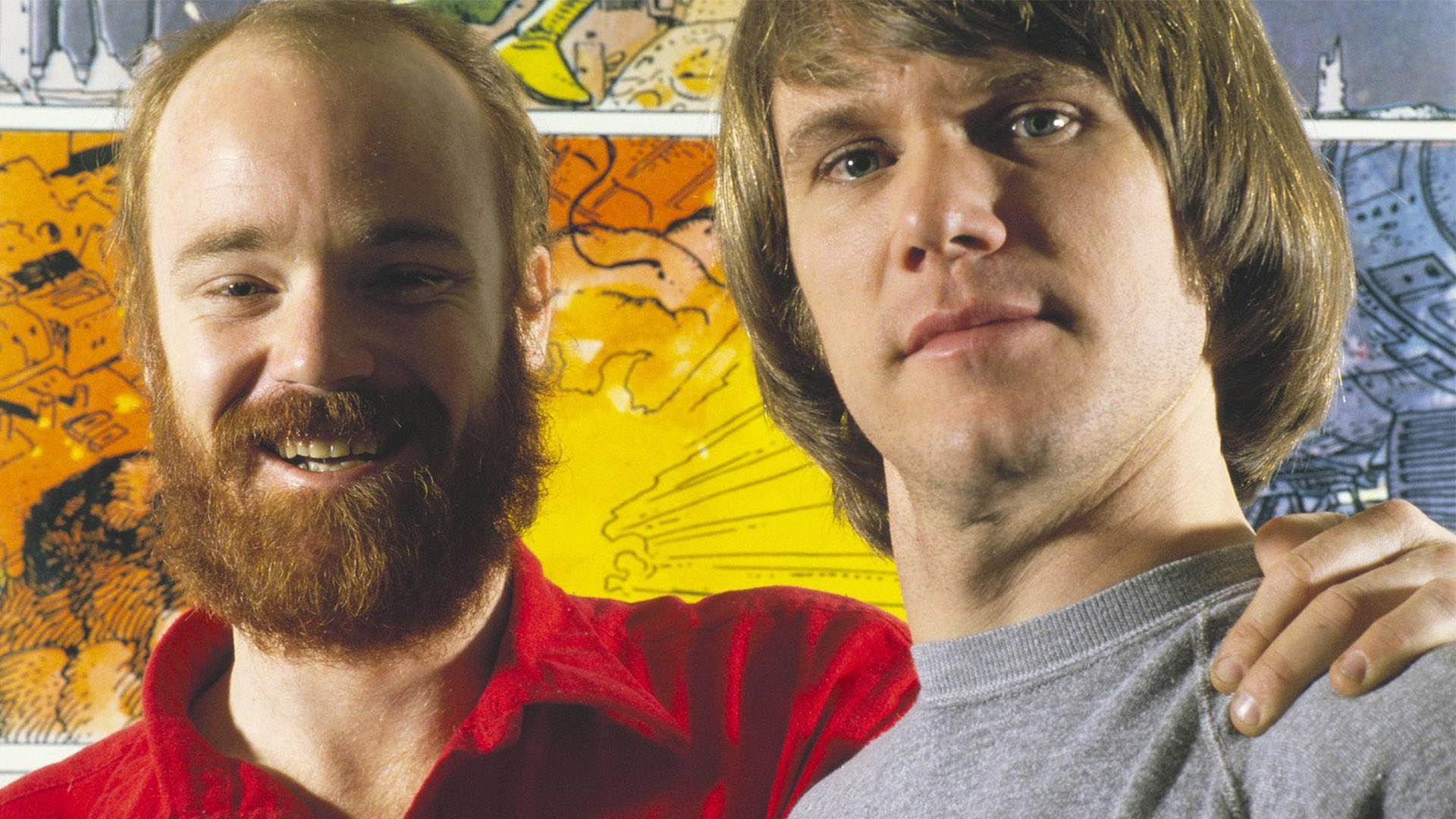ILM Pioneers Remember The Empire Strikes Back
The 40th Anniversary Celebration Continues With a Special Virtual Discussion
Star Wars: The Empire Strikes Back is celebrating its 40th anniversary in 2020, and four original crew members from Industrial Light & Magic (ILM) convened for a virtual discussion full of reminiscences and insights. Visual effects supervisor Bill George (himself with ILM since 1981) moderated because, as he put it, “of all the ILM employees, I have the best attendance record.” Each panelist, all veterans of Star Wars: A New Hope, played essential roles in Empire’s production.
It was a period of remarkable growth for ILM as they relocated to San Rafael, California, established a new facility, and expanded their workforce. An eccentric group came together, and the company thrived, creating Empire’s effects with a relatively small number of crew (around 60).
Joe Johnston – Visual Effects Art Director
Joe Johnston was among the first to join the Empire crew in the spring of 1978. As the film’s script continued to be revised, he created visual designs for vehicles, characters, and locations across the film. Johnston recalled that his workspace was in a small house near George Lucas’ main office, allowing the artist to consult with him on a daily basis. “I had like five or six months before ILM really got going, so I had a lot of time to really play around with stuff,” he commented, “It was really a lot of fun.”
Johnston remembered that early on, Lucas showed him Sergei Eisenstein’s classic film, Alexander Nevsky, whose opening featured a battle on ice between medieval warriors. Lucas told him, “I want the battle on Hoth to feel like this. I don’t want it to look like this, but feel like this.” With relative freedom from Lucas, Johnston relished the opportunity to imagine and develop the battle visually.
Lorne Peterson – Chief Modelmaker
George Lucas and producer Gary Kurtz had told Lorne Peterson that Empire would be an “easier” load for the ILM model shop because existing pieces from A New Hope could be reused. By the end, though, Empire would demand even greater feats of ingenuity and craftsmanship than its predecessor. Peterson was responsible for establishing the new model shop and hiring its artisans. “I wanted to see how people worked, how they talked to people,” Peterson said. “Knowing we’d be working a lot of hours, it needed to be pretty compatible.”
Empire not only involved more vehicles, but also the icy landscape of Hoth, the latter of which proved “the big deal” to realize. Peterson and the crew used baking soda and microballoons to create scaled-down snow. In order to animate the AT-AT walkers as they marched across the snowscape, carefully hidden trap doors were designed for the animators to access their models without damaging the set. “It was a bit of a trick to make it invisible,” Peterson commented, recalling “slipping sandwiches and drinks” underneath the stage to animators Phil Tippett and Jon Berg.
Phil Tippett – Stop Motion Animator
Initially, Phil Tippett was recruited by George Lucas to help design a “snow lizard.” He sketched designs for the tauntaun, including one which demonstrated how a performer might act within a costume, an idea Tippett and colleagues rejected. He eventually helped supervise the stop-motion animation of the tauntauns, as well as the AT-AT walkers and other vehicles and creatures. Tippett and fellow animators often worked late into the night without interruption. “Once we started a shot, we didn’t want to stop.”
For many on the crew, Empire was one of the most challenging projects they worked on, as it demanded a large number of complex effects. “If you look at the crew picture,” says Tippett, “it’s a remarkably small amount of people for that much work. It’s stunning.” He remembered that just weeks before the film’s initial release, George Lucas had Tippett animate a shot of Han Solo riding a tauntaun. Tippett asked Lucas if the tight deadline for the shot worried him. “No,” Lucas responded, “Every movie I’ve worked on, the print is still wet going into theaters and the projectionist has to get a hair dryer to dry it.”
Dennis Muren – Visual Effects Director of Photography
Dennis Muren was among those to campaign for stop-motion animation as the best technique to realize the tauntauns and AT-AT walkers. “George had no problem with it,” he remembered. Involved with developing ILM’s camera crew, Muren found it “very tough” to build a team where there wasn’t an active film industry, but in the end a group with “a wide range of interest” and background was formed.
With the ability to creatively experiment and upgrade equipment, Empire was a chance to try new things. To create the impression of daylight on the planet Hoth, Muren placed white bounce cards all around the set, something he’d seen on a commercial production for lighting a woman’s hair. He remembered the Empire production as a time defined by “learning and being curious.”





